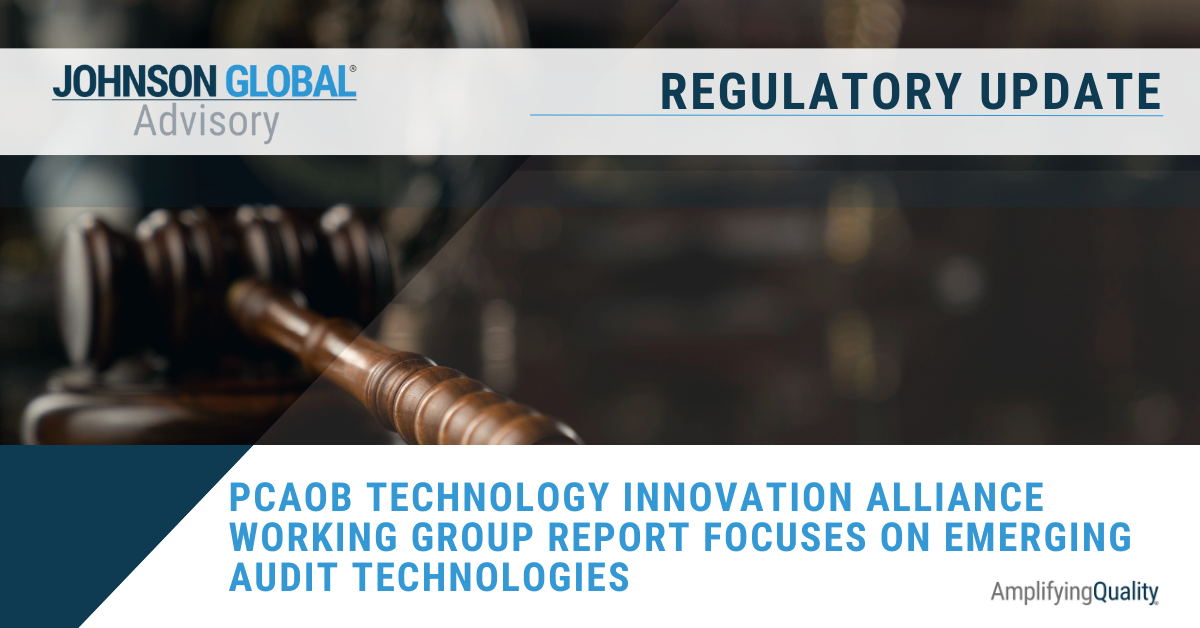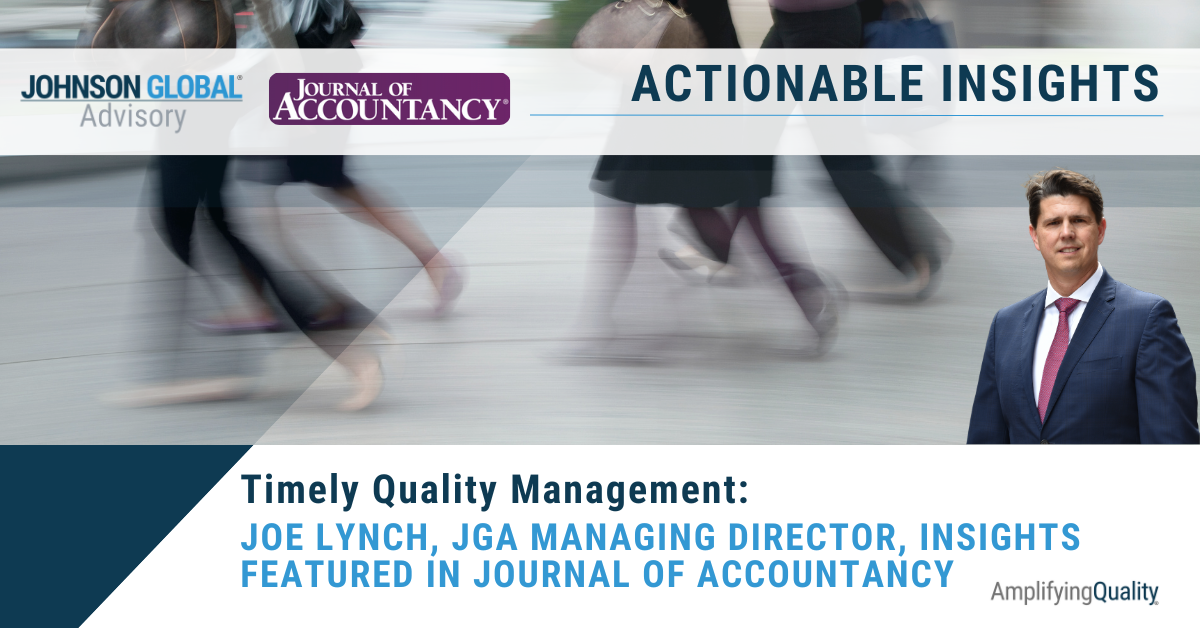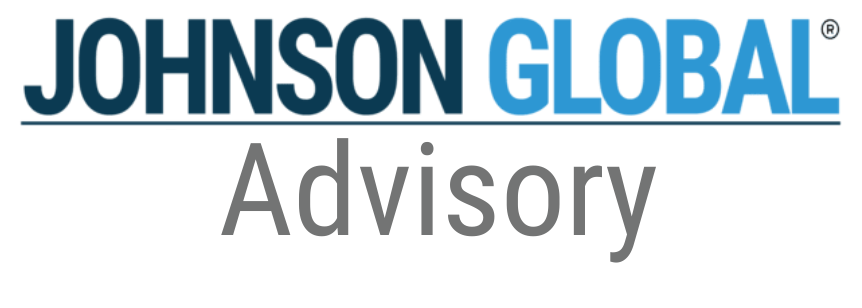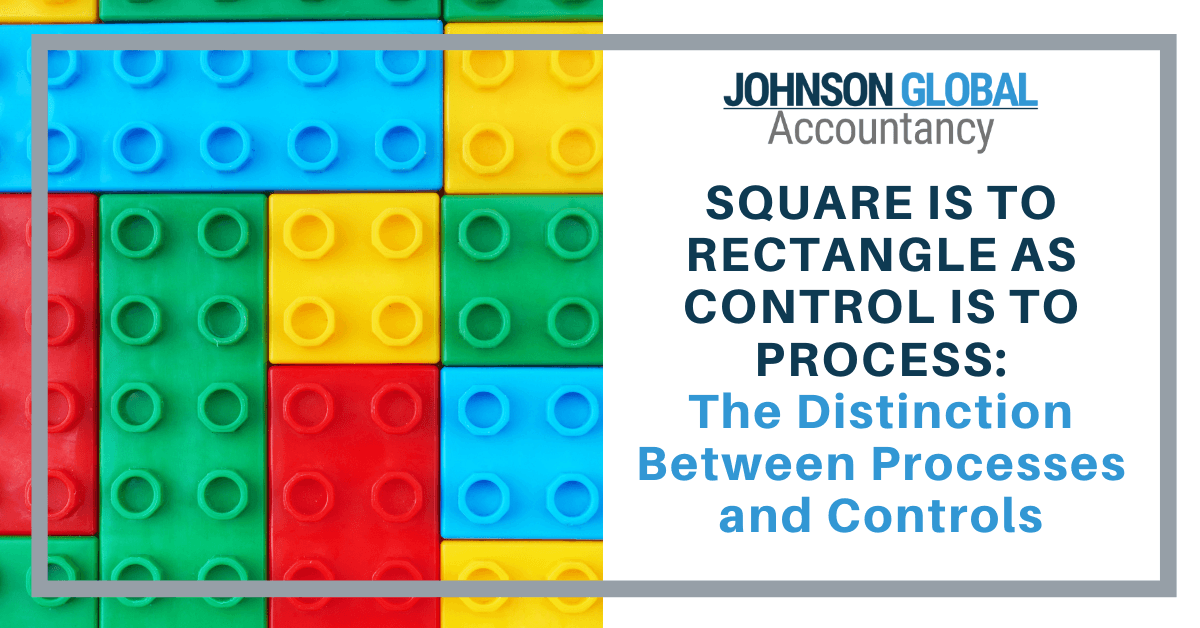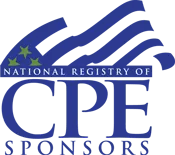Square is to Rectangle as Control is to Process: The Distinction Between Processes and Controls
For those who remember the SAT exam, the verbal portion of the test used to include analogies where you had to identify the relationship between two words presented and then select two words that had the same correlation from the multiple choice options. For example, some words were antonyms, such as “hot is to cold,” and thus the correct answer would be two words that were also antonyms, such as “high is to low.”
For purposes of this article, I’ll propose the following:
Analogy: square : rectangle :: control : process
Relationship: All squares are rectangles just like all controls are processes. However, not all rectangles are squares, just like not all processes are controls.
The emergence of internal controls really took shape when Congress passed the Sarbanes-Oxley Act of 2002 (SOX). The act required companies to formalize and evaluate their internal controls over financial reporting (ICFR) and, depending on size of the company, auditors were then required to report on the design and operating effectiveness of ICFR. Though internal controls were hardly new, this was the golden era of SOX-implementation.
Now, nearly 18 years later, ICFR may seem like old news, but through my work with firms performing in-flight and lookback reviews or advising engagement teams with their audit planning discussions, I am finding more and more that engagement teams struggle to understand the distinction between processes and controls. This distinction is critical to identify the appropriate controls that address potential “what could go wrongs” in a process and cover the risks of material misstatement in financial reporting.
As you know, as part of planning, auditors are required to obtain an understanding of the design of controls for significant classes of transactions. This understanding is required as part of risk assessment. For ICFR audits or audits with planned controls reliance, in addition to understanding design, engagement teams must also test the operating effectiveness of controls.
Often, engagement teams obtain a process narrative and perform a high-level control walkthrough, identifying easy controls such as dual check signatures or bank reconciliations. However, I find that many teams fail to adequately dig in to the process at a granular level to really understand the controls.
An example process is “sales to cash” which covers the processing of information from the initial receipt of a purchase order through to cash collections. Understanding the overall process is critical, but even more important is truly understanding the specific controls embedded in the process that are part of ICFR. Controls by their very nature are either “preventive” or “detective.” A simple example of a revenue “process” might be as follows:
Once an item is shipped, the invoice is generated and sent to the client for payment.
While this is a simple statement that describes the process, the generation of the invoice, itself, is not inherently a control.
If the Accounting Manager manually generates the invoice, what is the control that prevents or detects errors in the invoice creation? The control would be the separate review and approval of the invoice by someone other than the preparer (i.e. the controller) and would include a reconciliation to the packing slip and purchase order for key revenue recognition terms such as price, quantity, terms, and date. The generation of the invoice itself is part of the process but is not a control. The review is also part of the process but is a control to ensure the invoice is complete and accurate. In addition, other controls that should be built into this process would include review and approval over the journal entry to record revenue, AR, inventory and COGS debits and credits.
What if the invoice is automatically generated? For example, the invoice is generated in the system when inventory items are marked as “shipped” in the inventory module. Whereas the manual process might be covered by one manual control, the automated generation of an invoice is likely to have several automated controls built into the system, such as:
- Invoice automatically pulls shipped quantity via interface with the inventory module.
1
- Invoice automatically pulls price from the purchase order.
- Invoice cannot be generated without shipment from the inventory module.
- Manual price or quantity adjustments on the invoice automatically require separate approval based on pre-set limits within the system.
- Generation of an invoice automatically debits AR and credits revenue in the GL.
These are all automated controls that exist in the system, but are often overlooked when engagement teams obtain an understanding of the process.
While I speak from my own experience, in its Staff Update and Preview of 2019 Inspection Observations , the PCAOB identified numerous, recurring ICFR deficiencies, including the following:
Auditors did not identify and test controls that sufficiently addressed the risks of material misstatement related to relevant assertions of certain significant accounts.
I think there are multiple reasons for the lack of understanding of the distinction between processes and controls and thus the failure to sufficiently identify controls that address potential risks of material misstatement.
Changes to ICFR
The ICFR framework is perpetually changing within companies as they grow and evolve. For fiscal year 2020, process have changed for most companies as they have had to adapt to remote work environments 2 . If the process has changed, then the controls (which are part of the process) have also inherently changed.
Given the impacts on most P&Ls as a result of COVID 19, materiality thresholds are likely to be lower in FY 2020 and thus new accounts might be in scope. Or, alternatively, there could be new significant and unusual transactions that are occurring in FY 2020 where companies must design controls for transactions that have not otherwise previously occurred. Typically, these controls are management review controls which are often more complex controls with specific auditing considerations 3 .
It’s no longer “same as last year.” That means companies and engagement teams need to dig in to understand the new processes more fully and separately identify the new controls.
To understand processes, whether new, modified, or unchanged, I find it helpful to use flowcharts, breaking down the process into a step by step transactional flow. When I coach engagement teams in this area, I recommend asking detailed questions and literally go step by step. “What happens next?” For anything that takes place in the system, ask the client, “Where did those numbers come from?” or “What triggers that interface? that batch? that invoice?”
Most clients have a controls matrix that inventories all controls. If they don’t, ask for one; ICFR is first and foremost the responsibility of management. As engagement teams perform walkthroughs and write up a process narrative, consider including specific references to each control (from the matrix) so it’s clear where in the process these controls occur. Then take a step back and for each control, ask “what is preventive or detective here?” If you can’t answer that question, ask the client that same question.
For more senior members of engagement teams, when reviewing flowcharts and narratives, take a more critical approach in asking the question, “What could go wrong?” Then ask, “What control addresses this risk?”
Continued Integration of Technology in ICFR
While IT has made operations significantly more efficient for companies, I think it has also contributed to a further lack of understanding of controls. Engagement teams understand that data goes into a system but fail to understand what is occurring in the system and how the configuration is actually a series of automated controls.
Again, this goes back to the importance of understanding each step in the process and how the system processes data. Consider including IT auditors when performing walkthroughs since more and more companies are automating operations. As IT becomes more pervasive, the more internal controls will become IT dependent.
Despite continued automation, there are almost always capabilities for manual overrides and workarounds, so keep asking questions like, “What happens if there’s an exception?” or “What are the controls around manual overrides?”
Lack of Experience in ICFR
I started working in public accounting in 2006 and my start class was one of the last classes to really focus on ICFR implementation. Of course, there are new SOX implementations when clients grow large enough to fall in scope for ICFR compliance or when clients go public. But that is rare. While firms continue to do ICFR training, there is a difference in knowledge and experience gained from simply taking an ICFR training and going through an ICFR implementation. My start class, most of whom are now senior managers, directors and partners within accounting firms or upper-level accounting executives at companies, was the last class to experience mass ICFR implementation across multiple clients. It’s important that firms continue to provide training over ICFR for more junior staff, but they must also be sure to provide hands-on teaching and mentoring from more experienced staff who can pull from years of experience in SOX-implementation. As well, for more complex controls, such as management review controls it is critical to involve experienced auditors in the review.
Given the increasing volume of data, automation of information processing and the PCAOB and SEC’s continued focus on ICFR, internal controls are not going away. It’s important we continue to drill down into processes and understand “what is the process” versus “what is the control.” And remember the square to rectangle analogy: controls are a process, but the process is not necessarily a control.
And for those of you who remember (and probably hated) the analogies section on the SAT exam, you’ll be happy to know that they are no longer part of the verbal section. In fact, the entire verbal section has been replaced by two sections including “reading” and “writing and language.” Perhaps it could best be summarized by the following:
Analogy:
new : similar ::
change : same
Relationship: New format, same skills, just like the more things change, the more they stay the same, really.
About Johnson Global Advisory
Johnson Global partners with leadership of public accounting firms, driving change to achieve the highest level of audit quality. Led by former PCAOB and SEC staff, JGA professionals are passionate and practical in their support to firms in their audit quality journey. We accelerate the opportunities to improve quality through policies, practices, and controls throughout the firm. This innovative approach harnesses technology to transform audit quality. Our team is designed to maintain a close pulse on regulatory environments around the world and incorporate solutions which navigate those standards. JGA is committed to helping the profession in amplifying quality worldwide.
Visit www.johnson-global.com to learn more about Johnson Global.
1 Note that the interface would have its own set of controls to ensure appropriate communication of data from the inventory system to the revenue system.
2 For more information on COVID-19 considerations as regards internal control, please refer to the following: https://www.jgacpa.com/side-effects-of-covid-19-internal-controls-in-a-time-of-pervasive-change
3 For more information on testing management review controls, please refer to the following:
https://www.jgacpa.com/meeting-pcaob-requirements-for-icfr-achieving-compliance-with-the-vaguest-of-standards





